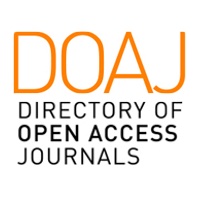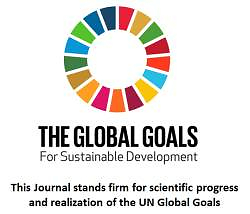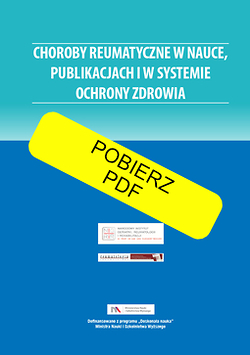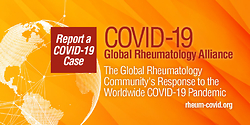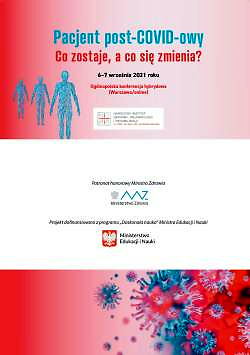|
5/2010
vol. 48
Artykuł oryginalny
Inkubator jednorazowego zastosowania dla potrzeb inżynierii tkankowej
Jerzy Szaciłło-Kosowski
,
Reumatologia 2010; 48, 5: 317–319
Data publikacji online: 2010/11/16
Pobierz cytowanie
Introduction The achievements of regenerative medicine allow the design of grafts based on scaffolds and patients’ own cells. Tissue engineering of chondrogenic grafts offers an attractive opportunity for replacement of degenerated cartilage or fusion of degenerated joints. Autologous transplantations of cell-based grafts seems to be a chance for regeneration of degenerated joints. In vitro manufacture of such implants is currently limited by the complex and expensive procedure and high risk of contamination. This study presents a safe and cost-effective incubator that allows an intraoperative approach to engineering cell-based cartilage grafts.
The recently published procedures and suggested standards for conditions required to transform cells into subsequently transplanted chondrocytes are not sufficiently safe when considering the aspects of tissue engineering [1,2]. Isolated cells, following incubation and transformation in the expected direction, are implemented back to the same patient (autotransplantation) although the risk of contamination between cells of different patients cultured in the same incubator is very high, especially when carefully controlled physical conditions (constantly lowered oxygen tension under modulated pressure) are necessary to recapitulate embryonic cartilage formation [3].
To prevent the possibility of contamination of cultured cells we have designed the Disposable Incubator for Tissue Engineering (DITE) in which the elements having direct contact with the cell culture, as well as all sensors and detectors, are disposable (Fig. 1). Description of construction The designed installation has three characteristic features. The first one is the ability to regulate oxygen concentration; the second is the ability to control variable pressure value; and the third is safety – the section for incubation is fully disposable. DITE also lowers the costs of a single cultivation process without losing flexibility or precision. The modular build of the incubator allows much greater mobility and the possibility of further improvements of separate elements.
The installation has three main sections: 1) the non-disposable section of compound preparation, 2) the disposable section of the process chamber, 3) the computer system of control, measurement and archiving.
In the compound preparation (CP) section the proper composition of gases and the transportation of the gases to the process chamber under the proper pressure value are carried out. The system of preparation of atmospheric composition is in the form of a chamber containing gas-measuring transducers and air fans. The gases are mixed in adjusted proportions and then transported through the compressor with the proper pressure to the process chamber. Gas containers located outside the chamber deliver oxygen, nitrogen and carbon dioxide gases. Between the compound preparation and process chamber a flexible storage chamber is located which increases the stability of the whole system. Outlet of gas from the CP is controlled by an electric valve. A biological filter separates the disposable and the non-disposable sections, preventing air mixing. Behind the valve the air flow is one directional, reducing the risk of the biological material being contaminated during cultivation.
The second component of the device is the process chamber (PCH – the only part having contact with the biological material), in which the cultivation process is maintained. All elements of this part of the system are disposable and will be replaced after each patient. The PCH consists of a sterile manipulator and a disposable pressure chamber with a test tube containing the cell culture. The other elements of this component include an electric heating cable, an air fan, and the pressure and temperature transducers. Leftover gases are evacuated unidirectionally through the outlet to the surroundings. To maintain the required temperature, depending on the environmental conditions, it may be possible to use an additional cooling system.
The computer control (CC) is the part of the system which unites the whole device. Here the cultivation process is controlled and all parameters (value and duration of pressure, temperature, composition of gases) can be adjusted to the requirements. All obtained data can be visualized, analysed and then stored on hard disks. Summary One of the biggest limitations on the introduction of autologous cell-based grafts in treatment is safety of manufacturing them and organization of intraoperative tissue engineering. The concept of the Disposable Incubator for Tissue Engineering allows the main limitations to be overcome. The disposability of all elements which have contact with the culture increases the safety of the incubator; the modular build makes it easier to transport and to improve; the low-cost disposable elements make it cheaper; and the computer control makes it much more precise, flexible and user-friendly. The cost of disposable elements which need to be replaced after each patient is estimated at about 50-100 Euro. The previous, preliminary version of the system has already been successfully used in the Department of Biochemistry of the Institute of Rheumatology in Warsaw, Poland. References 1. Malda J, van Geffen M, Martens E, et al. Low oxygen tension stimulates the redifferentiation of dedifferentiated adult human nasal chondrocytes. Osteoarthritis Cartilage 2004; 12: 306-313.
2. Elder SH, Goldstein S.A., Kimura JH, et al. Chondrocyte Differentiation is Modulated by Frequency and Duration of Cyclic Compressive Loading. Ann Biomed Engin 2001; 29: 476-482.
3. Ferguson C, Alpern E, Miclau T, et al. Does adult fracture repair recapitulate embryonic skeletal formation? Mech Dev 1999; 87: 57-66.
Copyright: © 2010 Narodowy Instytut Geriatrii, Reumatologii i Rehabilitacji w Warszawie. This is an Open Access article distributed under the terms of the Creative Commons Attribution-NonCommercial-ShareAlike 4.0 International (CC BY-NC-SA 4.0) License (http://creativecommons.org/licenses/by-nc-sa/4.0/), allowing third parties to copy and redistribute the material in any medium or format and to remix, transform, and build upon the material, provided the original work is properly cited and states its license.
|
|

 ENGLISH
ENGLISH

